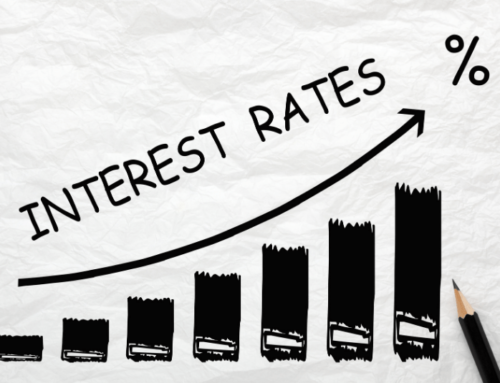Purchasing A Car is an exciting experience. Car dealerships are fun, and it’s easy to get caught up in the moment, but don’t let that excitement lead you into making one of these ten common Purchasing A Car mistakes! Car buyers often make these errors because they are excited or inexperienced. Read this blog post to learn how not to overpay for your new vehicle!
Everyone makes Common Car Buying Mistakes when they buy a car.
Purchasing A Car is not like buying jeans. If you don’t like it, you can’t return the car. (Unless there is something wrong with it.) You should make sure that the dealership lets you take the car back even if they fix it.
If you buy a used vehicle and discover that it doesn’t fit in your garage, isn’t as comfortable as you thought during the test drive, or that you overpaid for it, there’s not much you can do about it. It’s also possible that if you find out that you paid too much for the car or simply cannot afford the monthly sum.
What are the top 10 car buying blunders that most people make? Simply read the list of the top 10 vehicle purchasing mistakes to avoid making the same mistakes. Here they are, in no particular order.
1. Avoid taking the time to check out vehicles, and pricing
pushing is one of the most common car purchasing blunders. There are several different vehicles to select from, so don’t buy the first one that comes your way. Take the time to figure out what sort of vehicle would be ideal for you before diving into research on all things cars.
Pickup trucks, on the other hand, are a classic. Are they ideal for you? Is a compact SUV your best bet? A hatchback or wagon, perhaps? Keep in mind that there may be incentives on less popular cars.
Look at models and trims further by examining them. Learn about dependability and mileage, discover about equipment and depreciation, and check for news of incoming models ahead. Dealers frequently reduce prices when a new version is introduced.
It’s up to you to figure out what’s available rather than being taken in by a dealer’s marketing (that’s exactly what they want). You should begin looking only when you can describe the type of motor vehicle you’re searching for, why you need it, and whether or not it is suitable for you.
2. Falling in love with a certain model
This is a big blunder to make in two ways. First, since you’ve decided on a GoGoWagon LTE or something similar, the salesman will almost certainly figure out and become less flexible on price. (Does he know you’ll Purchasing A Car if you’re licking the paint off of it?…he already knows.)
Second, it narrows your attention to options that are less costly and better for you. Perhaps the BooBooHatch GLR is quicker/better to drive and far more cost-effective. You won’t know if you’re set on the GoGoWagon unless you try it out first.
Dealers may offer good deals to consumers that are enthusiastic about a certain car. However, it’s better to maintain an even temperament and let the salesperson know you’re interested in obtaining the automobile if you can do so at a sensible cost. You’re willing to look at other vehicles if you can’t acquire them for the price you want.
Keep in mind that dealerships are not out to lose money on automobile transactions, but being discreet about your feelings and treading the fine line between “interested” and “enthusiastic” can usually help you get closer to ensuring that the dealer breaks even or loses only a few hundred dollars.
3. Do a thorough test drive before you buy a car. How to test drive a car?
If you’re thinking about buying a car, it’s important to test drive it. Make sure that you go to the place and ask about the vehicle and if they have one available for you to test drive.
A planned test drive route is usually offered by dealerships. This course primarily consists of right turns with only a few lefthand turns. It’s been demonstrated while driving a car that was new to you. When turning left, more collisions occur. Once you’ve left the dealership, most automobile salespeople will allow you to drive wherever you want. Simply tell them that you wish to drive the vehicle for a longer period of time in order to determine whether or not you could possess it.
The test drive isn’t about finding issues; it’s about determining if you can live with a vehicle. Isn’t it likely that you’ll make a left turn at some point during the test drive?
Familiarize yourself with all of the buttons, knobs, and controls before getting into the vehicle. Set your seat to a comfortable driving position, and then adjust all of your mirrors to determine where the blind spots are.
In the same way, take it on the highway to check if it becomes loud and in town to assess visibility. Feel how it rides over various surfaces and, more significantly, that you are comfortable. One of the most common automobile buying blunders is purchasing a vehicle that isn’t comfortable to sit in.
4. From MSRP (Sticker price), you’re likely to negotiate down.
When you buy jeans, the price on the label is what you pay. But for a car, there is another price that matters. This other price is what the dealer wants to sell the car for. It’s called “dealer invoice.” You should try to use this number as your starting point when you are negotiating.
The dealer invoice is what the manufacturer pays to sell the car. The dealership usually makes money in other ways – for example, they will get bonuses if they reach certain sales targets or dealer holdback. Sometimes there are incentives and rebates. Some models are eligible for discounts too.
The greatest and simplest way to accomplish this is to get free price quotes from dealers via the internet. This will show you which dealer is more flexible on pricing and which one would be more inclined to decrease their rates to sell a vehicle.
Before you go to the dealership, make sure you know their cost. That way, when you are negotiating, you can start from there.
5. Focusing on monthly payments would be a mistake.
It’s simple for a dealer to decrease your monthly payment. All they have to do is extend the loan or lease term. That will most likely cost you more in total because of additional interest payments. Another tactic is to increase the down payment size. Your monthly expense goes down, but you’ll pay considerably more in total if you do this.
It’s all about the price of the car. Car salesmen are trained to discourage you from discussing that number but don’t let him deflect your attention. Keep bringing up the expense and arguing it down, no matter how many times he tries to divert the conversation. Once you’ve decided on a price, only concentrate on payment terms.
6. Using a dealer for financing is a dangerous game.
When the dealer arranges your financing, he is not doing you a favor; he is getting compensated for it. As a result, not only does he make money on the automobile he sells you, but he will also try to maximize his earnings by originating the loan. Furthermore, he very probably doesn’t get you the best possible interest rate.
Before going car shopping, test around for vehicle financing. A pre-approved auto loan benefits you by putting the dealer’s finance department on even ground. It also provides a fallback in case they are unable to obtain you approved at a rate lower than what you have now.
When you ask about the interest rate, it’s like asking how much you will pay for something. If it’s too high, then maybe you should not buy that car. The difference between one percent on a $25,000 loan can be over $5,000 in six years!
7. Buying things you don’t need is a waste of money.
Do not buy rustproofing or windshield coatings. You do not need them. You may want to get them because you are spending that much money on the car, but then you can think about it and see if it is worth it.
Here is why you don’t need extras: most extras are profitable for car dealerships, and they cost money. If you decide later that it is something you want, shop around. You will find a better price for the same thing.
8. Rolling negative equity into the vehicle you’re purchasing.
The worst vehicle purchasing blunder is to buy a car that you owe more than it is worth. You have a lot of negative equity in your current automobile, but they will not deter them. And there are several strategies they can use to persuade you into adding your bad equity to the new vehicle you’re buying.
Suppose a vehicle’s value deteriorates by about 30% in its first year of usage. What happens when you add $3500 to the car when you buy it? That money will eventually have to be repaid, and you’ll be left holding the bag. It takes approximately 3.5 years for a typical 5-year note to become close to
You won’t have to pay any extra money after your lease expires. The difference between the two payments will be added to your new loan. This can be very costly when you really break down the numbers.
If you can’t pay off your current vehicle before upgrading it, perhaps you should keep driving it for a few more months. Try to buy a new car with a big down payment (about 20% of the purchase price) so that you don’t end up owing more than the vehicle is worth when you sell it.
9. You don’t know how much your trade-in is worth.
If you want to get a better price for your old vehicle, sell it privately rather than trade it in; you’ll receive a higher value. That said, there are several benefits to selling your car instead of buying a new one. It eliminates the trouble of having to sell it outright, dealing with strangers, and streamlining your cash flow problems.
Online car price sites will normally provide a trade-in value. Carry the figures with you to the dealership so you have something to support your request for a better price if they make you a lowball offer (which they will.)
Remember, they will be giving you wholesale prices rather than retail ones. Because they have to live, the dealership requires a margin between the purchase and selling prices. You reduce that gap by finding out what your automobile is worth.
10. Not having your automobile inspected
When you’re purchasing a used automobile, there’s a crucial phrase to remember: caveat emptor. No, it’s not Julius Caesar’s treacherous sidekick, though there is a Roman connection. It means “buyer beware.” Used automobiles are advertised as being in very good shape. It is your responsibility to know what you’re getting for your money.
Not every one of us is a skilled mechanic, and most of us will not notice minor issues that might get more costly. That’s why purchasing a used vehicle history report and having a professional inspection are both important. If you don’t, you might make a very expensive automobile purchase mistake.
Consider your options carefully before purchasing a car.
Taking a car for a brief spin is very different from living with it. Perhaps you enjoyed the low seating position or the bright paint, but after a few weeks, both become tiresome. Maybe your issue is more financial in nature: you discover that those payments take up a greater proportion of your income than you had anticipated, or perhaps insurance premiums are higher than you expected. Even if you managed to negotiate a good deal, the vehicle has dropped in value by now, even if you got a great price; therefore, selling it will result in a loss. It’s not an enjoyable sensation.
Mistakes in car purchasing are all too frequent, and they happen more often than you would think. Most people do not want to admit to making a mistake, so they keep their lips sealed. Car dealerships profit from it, while the poor purchasers must bear the burden of paying off their loans. You may avoid this scenario by reading our list of the top 10 automobile-buying blunders. You’ll be a smarter, more smiley automobile owner after studying it.
The most important advice for saving the most money when buying a new or used automobile is to “DO YOUR RESEARCH FIRST!”
As I always suggest, use a service that will give you an online price quote. This is free. This may assist level the playing field in comparison to automobile dealers. When they understand what other auto dealers are offering, they may be more flexible on pricing.




